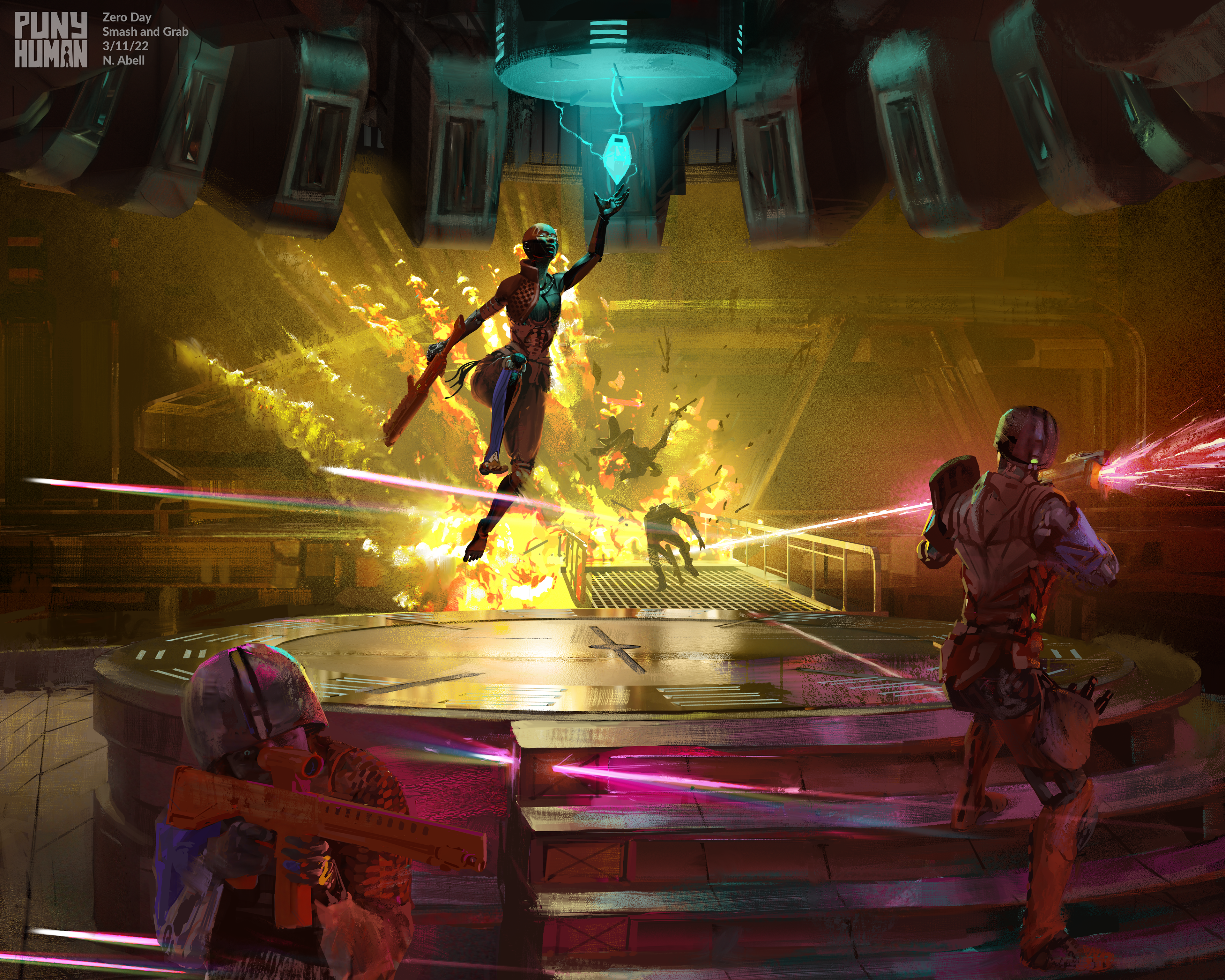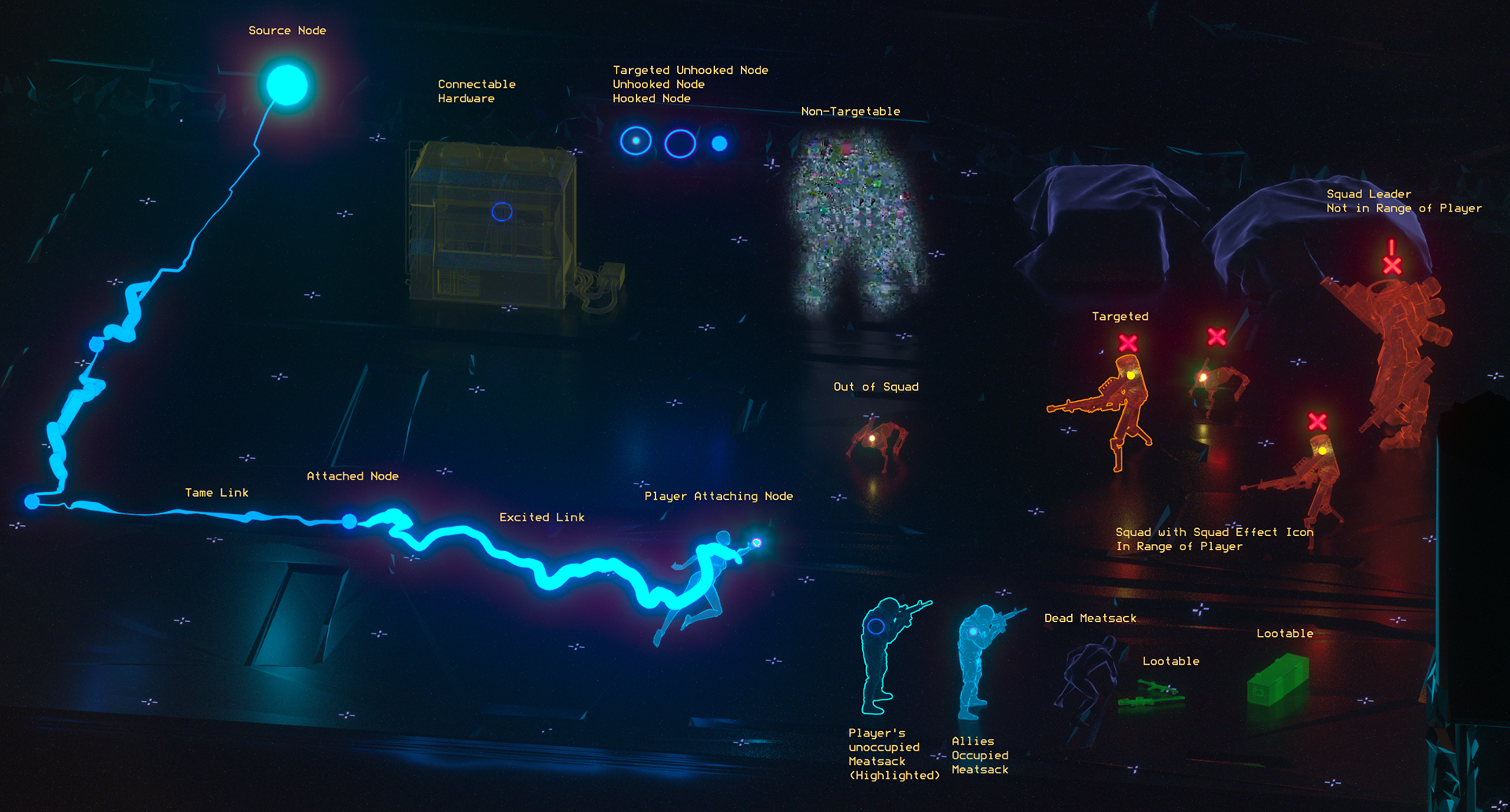I was hired at Puny Human to help secure funding for projects as a concept artist and art director. The largest contribution I made was on Zero Day. It was a reimagining of Dystopia, a very successful cyberpunk team deathmatch mod of Half Life 2. Puny Human was an outsource studio that wanted to begin developing original products. The team remained small throughout my time there as we supported the hunt for funding and began preproduction. We were developing in Unreal 5.
The art team on this project:
Nick Miller - 3D Lead
My first task was to quickly consolidate the visual brand and update the pitch deck. I worked with the game director to learn what we could bring forward from the Dystopia IP. Below was an early mockup of a first person view.
The art team on this project:
Nick Miller - 3D Lead
My first task was to quickly consolidate the visual brand and update the pitch deck. I worked with the game director to learn what we could bring forward from the Dystopia IP. Below was an early mockup of a first person view.
Below is the first page of the slide deck originally, with my sketch and the final painting as an example of process. I wanted to move away from the trope of cyberpunk blue into an orange which you will see throughout the following images.
The gameplay centered around looting and extraction in an industrial mega city called Zenith. Here are several of the images I put together for the pitch deck.



One of the largest aspects of Dystopia was it's dual-layered field of play. One field was in the real world and the other was a digital representation called cyberspace. Visualizing a digital world as a seamless but contrasting opposite to the physical world was a major undertaking. I was very happy with the direction we ended up with. Below was an early concept image of the same view from both layers.


Here are a few concepts of how a player's avatar could manifest in cyberspace. I wanted the place to feel like purgatory, not bad or good, but unliving. I worked to minimize the digital feel of the space and let the lighting and color palettes separate cyberspace from real space.




Mood board for cyberspace player avatars.
The UI requirements of cyberspace were challenging, we had a lot of data to communicate quickly and efficiently. Here are some examples about hacking units in a squad, gameplay around nodes to drive player power and all the possible states a player, item or NPC could fid itself in while in cyberspace.



Here is a quick showcase of the cyberspace and node system block outs.
Here are some concepts for mechanical player characters.
Here is an example of a visual spectrum. I love this tool and rely on them to help in alignment. In this specific spectrum I wanted to define our posthuman technology. The right end represents technology that is indistinguishable from a normal human to very obviously augmented on the left.
Early concept for a player braincase, which was planned to enable team respawn mechanics.
Below is a concept of the city of Zenith. Creating a believable sense of space and location is critical early stepping stone in conveying original IP to external partners, investors and publishers.
Below is an example of how I establish direction for environments. Finding a few good reference images and calling out the exact aspects of it that I'd like us to explore aids in architecture, lighting and color palette direction for the team downstream.
Once the slide deck had been updated I began preproduction. I hired Nick Miller as 3D lead and he set about prototyping environment assets and material pipelines. Puny Human was initially an outsource studio and we had help from engineers and animation associated with external projects from time to time but all of the work I present here is from Nick and I.
Nick and I began working on environment assets together to prototype environment. I would concept in 3D and 2D and he would clean the models up. The following images are 3D mockups I put together in Blender.
A set of trim pieces modelled by Nick.
Nick's modelled and textured assets in Unreal.
Below is an example of weapon direction for the project. I wanted the weapons to feel cheap and 3D printed on one end of a spectrum and incredibly advanced and delicate on the other. This supported the loot and progression loops and helped us define a unique look for the weaponry in Zero Day.
Some industrial design for walls and a shipping crate.
We delivered a playable art test in Unreal with a mix of original and placeholder assets near the end of the project. I was very happy with this direction and was looking forward to continuing to develop it.
Sadly funding eluded us and the studio shut down. I am so thankful to be given the opportunity to work on Zero Day and hone my craft on such an iconic IP.